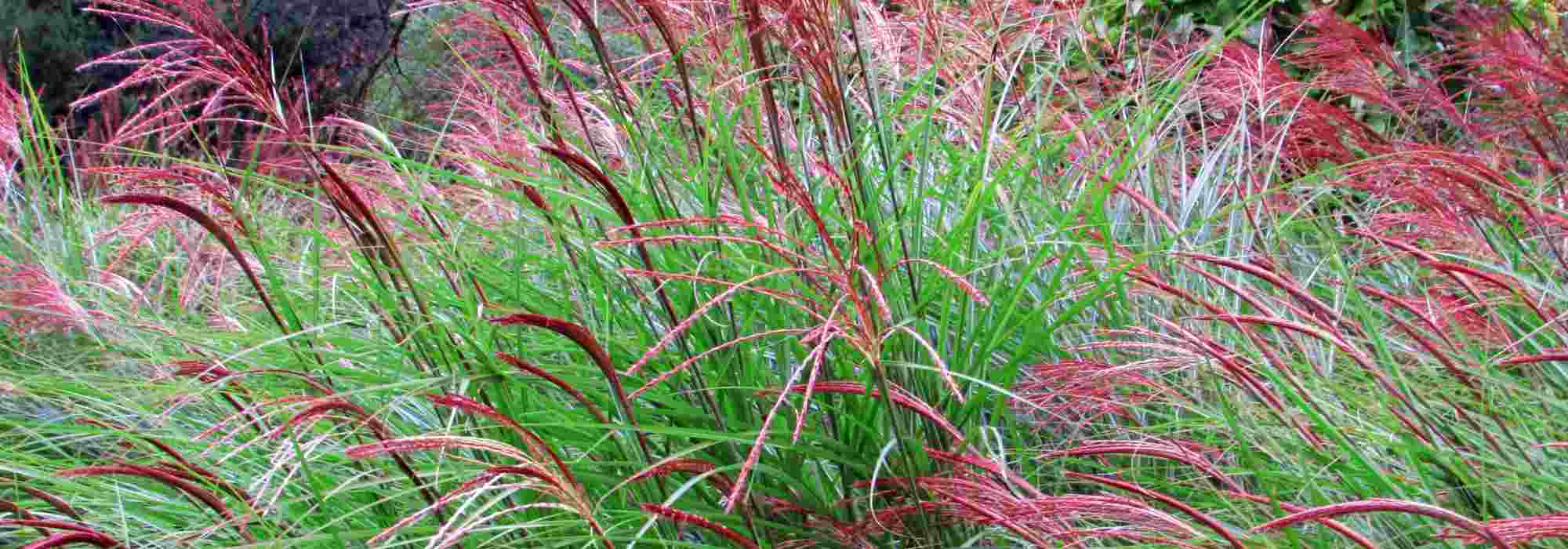
Miscanthus: best varieties
A selection of the most beautiful Chinese reeds
Contents
Also called elephant herb, the Miscanthus displays a striking personality in the garden with its superb ribbon-like foliage, often evolving through the seasons and bringing a great sense of lightness. At the end of summer, its flowering borne well above the foliage on soft, graceful plumes elevates it into autumn. It then enlivens the garden throughout winter with silvery or creamy highlights.
These tall, structural grasses with rapid growth are declinated into around a hundred varieties, most derived from Miscanthus sinensis. You will easily find about a dozen on the market, but how to find your way among the incredible range of these exceptional grasses?
Here we present a few varieties among the most beautiful, reliable choices for their spectacular foliage and flowering, their reliability and their ability to suit all garden styles, whether large or small.
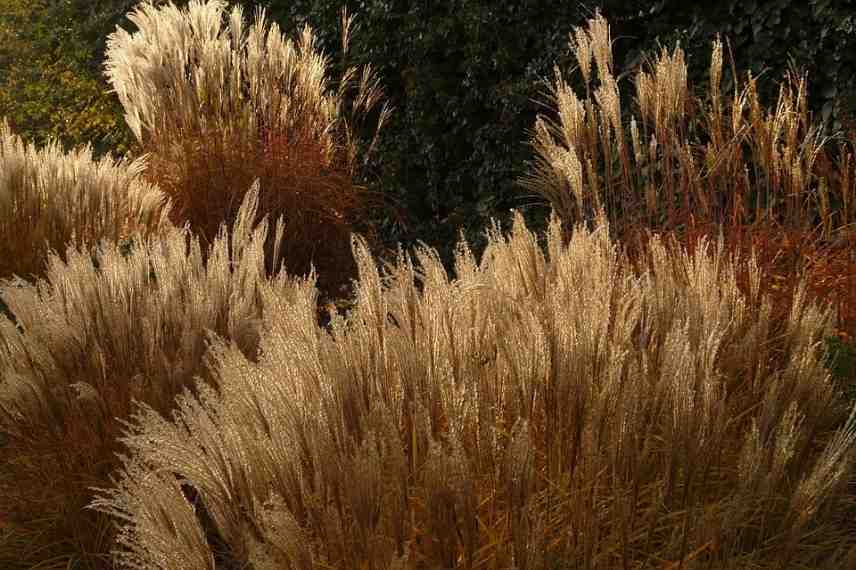
Miscanthus sinensis 'Gracillimus': elegance and versatility
Among fine-leaved Miscanthus, cultivar ‘Gracillimus’ is undoubtedly the most striking: it produces very delicate bright green leaves marked by a silvery central filament, which means it is mainly used for this highly ornamental verdant aspect. Foliage takes on a splendid golden-bronze hue as temperatures drop in autumn, and this colour is retained over winter. Inflorescences appear in September; they are initially pink-silver, then turn rusty in autumn, but remain sparse and do not stand out much from the foliage. It is truly the rounded clump produced by the incurved habit of the leaves and their very fine structure that gives ‘Gracillimus’ all its appeal, with a graceful presence even in winter. Reaching about 1.5 m in height by 1.2 m spread, it is easy to use in many areas of garden. Its versatility for styles from contemporary to cottage, together with unmatched hardiness, set it apart in this selection.
Plant Miscanthus ‘Gracillimus’ in fresh or moist soil, in sun as with all Miscanthus. In a border, you can pair it with Eragrostis spectabilis, slightly taller Miscanthus sinensis ‘Malepartus’, Hydrangeas ‘Hayes Starbust’, Persicarias, Liatris spicata… All combinations are possible!
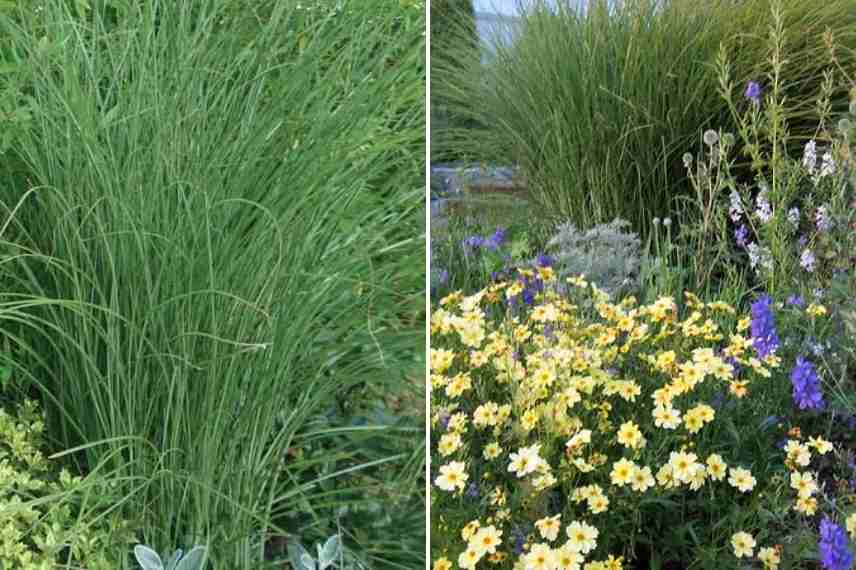
Miscanthus sinensis ‘Gracillimus’ (Right-hand photo: KM)
Miscanthus sinensis 'Ferner Osten': graceful foliage and flowering
Among the most remarkable Miscanthus, ‘Ferner Osten’ has many fine qualities: a lush, dense silhouette; a rare elegance with very fine olive-green foliage marked by a fine central stripe
Miscanthus sinensis ‘Ferner Osten’ deserves a prime position: it adapts to many situations — as a hedge, mixed with other Miscanthus, in a winter border with some Cornus ‘Sibirica’ and Miscanthus ‘Sarabande’ or ‘Cosmopolitan’, in borders with pink tones (Sanguisorba, Eragrostis spectabilis, Cotinus) or orange (Rudbeckias, Kniphofias…), grouped in large drifts, planted as specimens, etc.
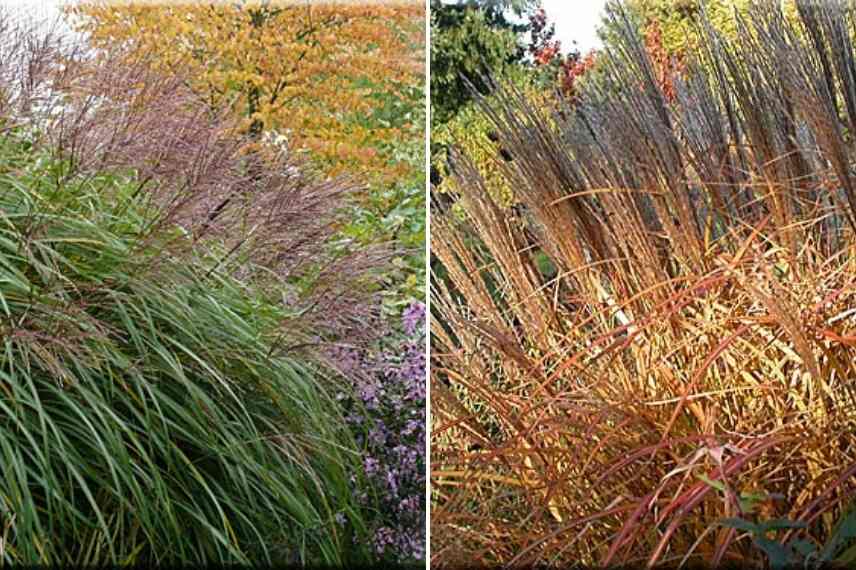
Miscanthus sinensis ‘Ferner Osten’ (Photos: C. Baral)
Discover other Miscanthus
View all →Available in 0 sizes
Available in 3 sizes
Available in 1 sizes
Available in 1 sizes
Available in 1 sizes

Available in 2 sizes
Available in 2 sizes
Available in 2 sizes
Available in 2 sizes
Available in 3 sizes
Miscanthus floridulus : a giant for open spaces
If you are looking for a giant to occupy the back of a border or the rear of a garden as a privacy screen, Miscanthus ‘Giganteus’ is for you! Imposing, sculptural, it is Miscanthus of every superlative. Planted in a line or massed, this variety, between 2.5 m and 3 m tall, is indeed the ideal grass to serve as an almost evergreen screen year‑round (cut back, as with all Miscanthus, at end of winter so it regrows strongly). Very vigorous, Miscanthus floridulus (another name) has broad, very arching dark‑green leaves turning coppery in autumn. Its habit is broad and erect.
It flowers in long pink then silvery spikes only during hot summers and in warmest regions, but it is above all its remarkable screening effect that makes it so interesting, without presenting invasive drawbacks sometimes associated with bamboos.
Its form is so architectural that it can also be planted as a specimen to create a unique focal point in your garden. It is also well suited to ornamenting edges of water features.

Read also
9 ideas for pairing MiscanthusMiscanthus sinensis 'Strictus': variegated and striking
Often confused with variety ‘Zebrinus’, Miscanthus sinensis ‘Strictus’ indeed displays horizontal striate markings forming a very bright, decorative yellow zebra-like variegated pattern. With a more erect habit, thanks to its short, stiff leaves, it forms a compact upright clump 2.20 m high with a spread of 1 m. This striking variety flowers late, from October, with purplish-pink spikes turning silvery. It performs best in cool, moist soil in full sun. Use it in a grass garden where this variegated variety will add relief and contrast. It also pairs very well with a pared-back modern border or with an area planted in exotic patterns, where it reinforces the atmosphere with its originality and vivid colours. You can combine it with some persicarias and Hydrangeas ‘Annabelle’, and some chartreuse foliage such as alchemillas or selected Physocarpus, which will complement its extraordinary luminosity.
N.B.: dwarf form Miscanthus sinensis ‘Strictus Dwarf’, only 1 m tall, is well suited to container cultivation on a contemporary terrace.

Miscanthus sinensis ‘Strictus’ (on the right paired with Leucadendrons ‘Ebony’ – Photo: KM)
Miscanthus 'Ghana': fiery autumn colours
Here is a superb variety for its summer then autumn colours: Miscanthus sinensis ‘Ghana’ is a Chinese silvergrass of medium size, about 1.50 m tall, with broad green foliage turning red in mid-summer. Flowering fairly early in August in inflorescences first purple then fading to silvery beige, it is the shades of its foliage that make this variety so beautiful when autumn arrives. It then takes on a festival of the most shimmering colours, from orange-red to chocolate. The plumes, then beige, stand out and contrast nicely, well above the foliage. Planted in full sun, it is marvellous beside a pond, providing a fine presence in the middle or back of a border. Pair it, for example, with a Panicum virgatum, a Miscanthus sinensis ‘Morning Light’, some Aster ericoïdes, persicarias…

Miscanthus 'Morning Light': Refined and ideal in containers
Among small Miscanthus — yes, they do exist! — do not hesitate to choose the lovely Miscanthus sinensis ‘Morning Light’, a pretty name for a grass that is indeed very luminous. Bearing very graceful, fine foliage, slightly streaked with silver filaments, which give it a slightly variegated appearance, it remains modest in size, no more than 1.50 m at flowering. It is therefore ideal if you wish to place a Miscanthus in a pot or a large container on the terrace. Its bronze-red flowering is rather late; it will become whitish as it opens. It also has very good winter hardiness.
In a container, pair it for example with a few mounds of Hakonechloa macra, box balls and a Phormium for a pretty contrast of texture and colour. In the garden, it looks lovely accompanied by elegant, graceful plants like it: Salvia nemorosa ‘Caradonna’, Gauras Lindheimer white, Scabious, Nigella, and a few Panicums virgatum ‘Heavy Metal’ if you have a little space.
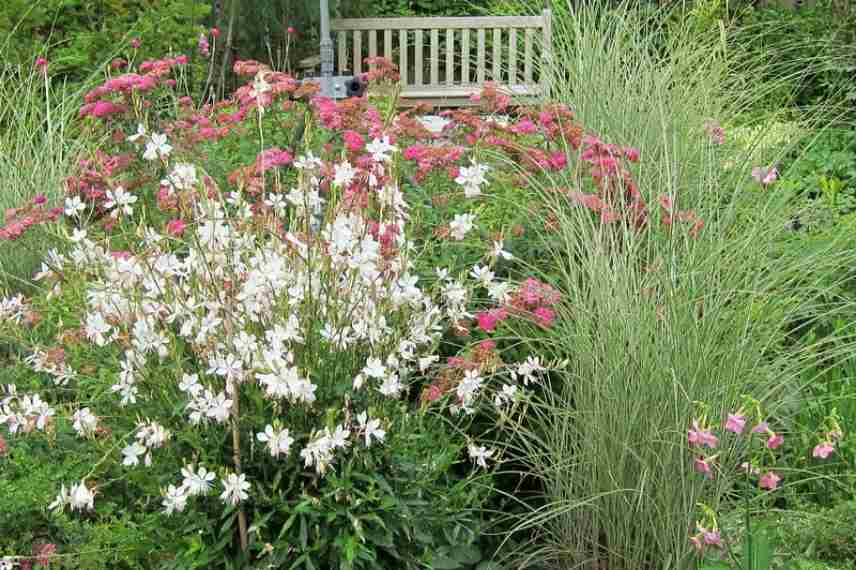
Miscanthus sinensis ‘Morning Light’, Gauras, Japanese spirea, ornamental tobacco (Photo: KM)
Miscanthus sinensis ‘Malepartus’: very floriferous
To complete this selection, I recommend a very attractive cultivar with broad foliage and abundant flowering: it is Miscanthus sinensis ‘Malepartus’. It also has many strengths, producing one of the most generous flowerings. Long panicles emerge coppery-pink in August before turning silvery in autumn. Its foliage is among the broadest and most beautiful in autumn: very ornamental, starting dark green then becoming tinged with purplish-pink. Reaching 1.50 m to 1.80 m at maturity (after 3 years), you can plant it almost anywhere, in a wild meadow or a large bed of grasses or perennials.
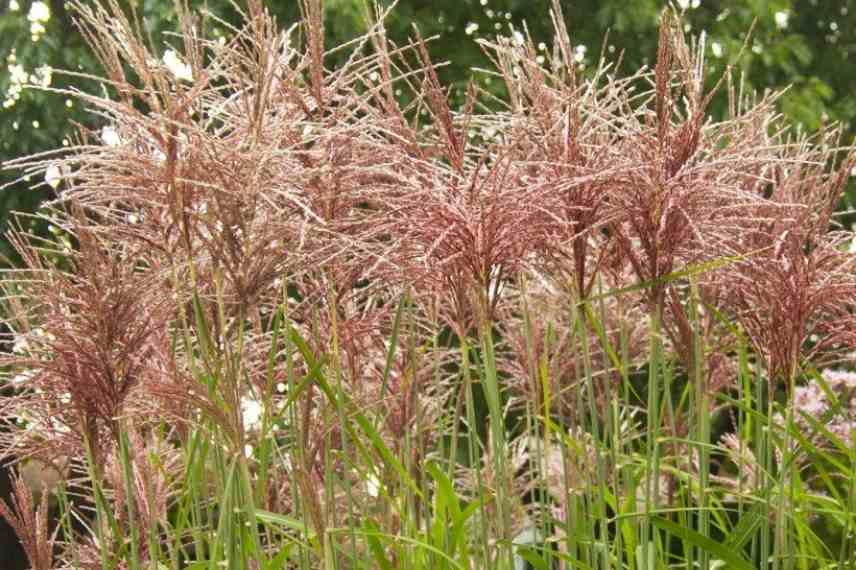
- Subscribe!
- Contents
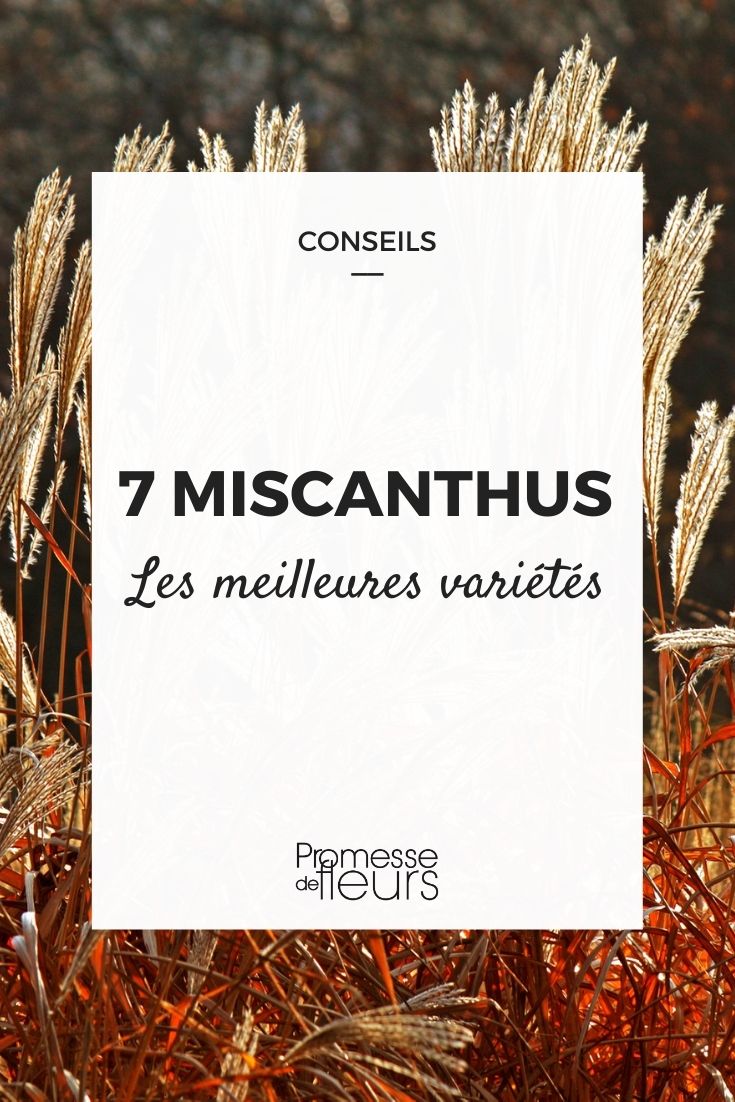































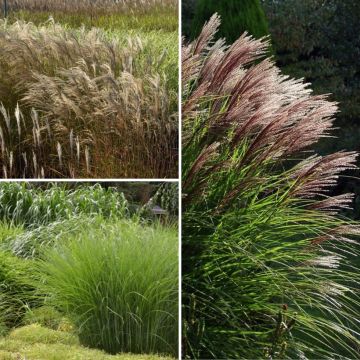
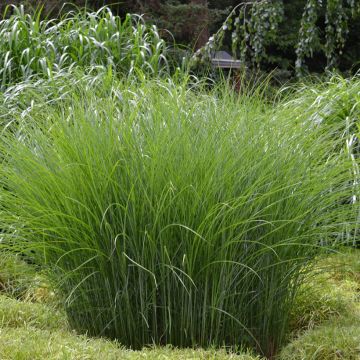
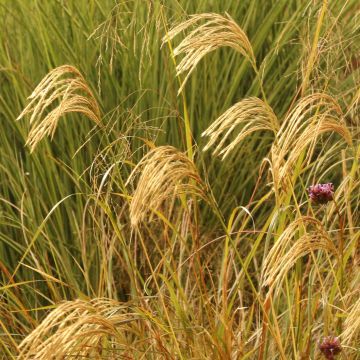
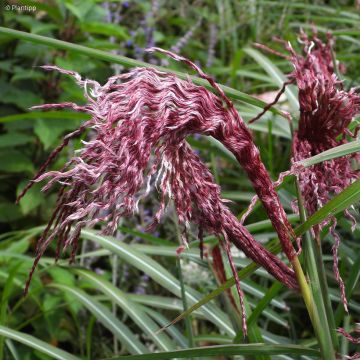
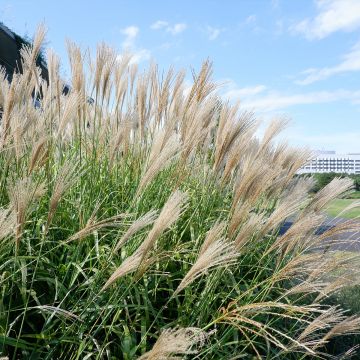
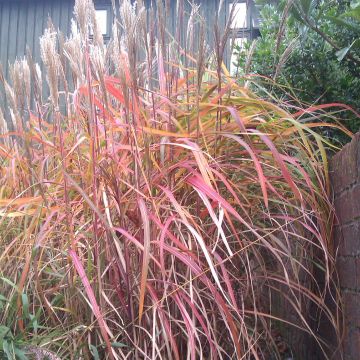

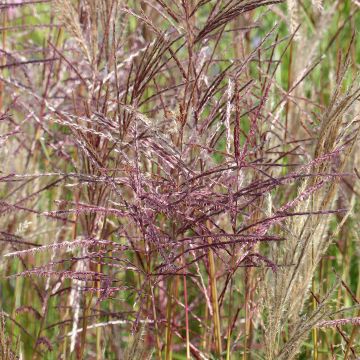
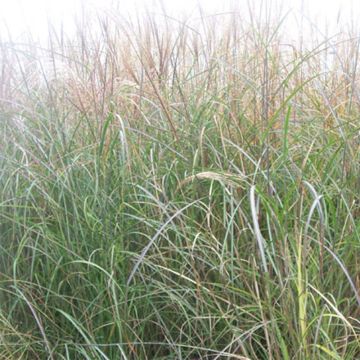
Comments